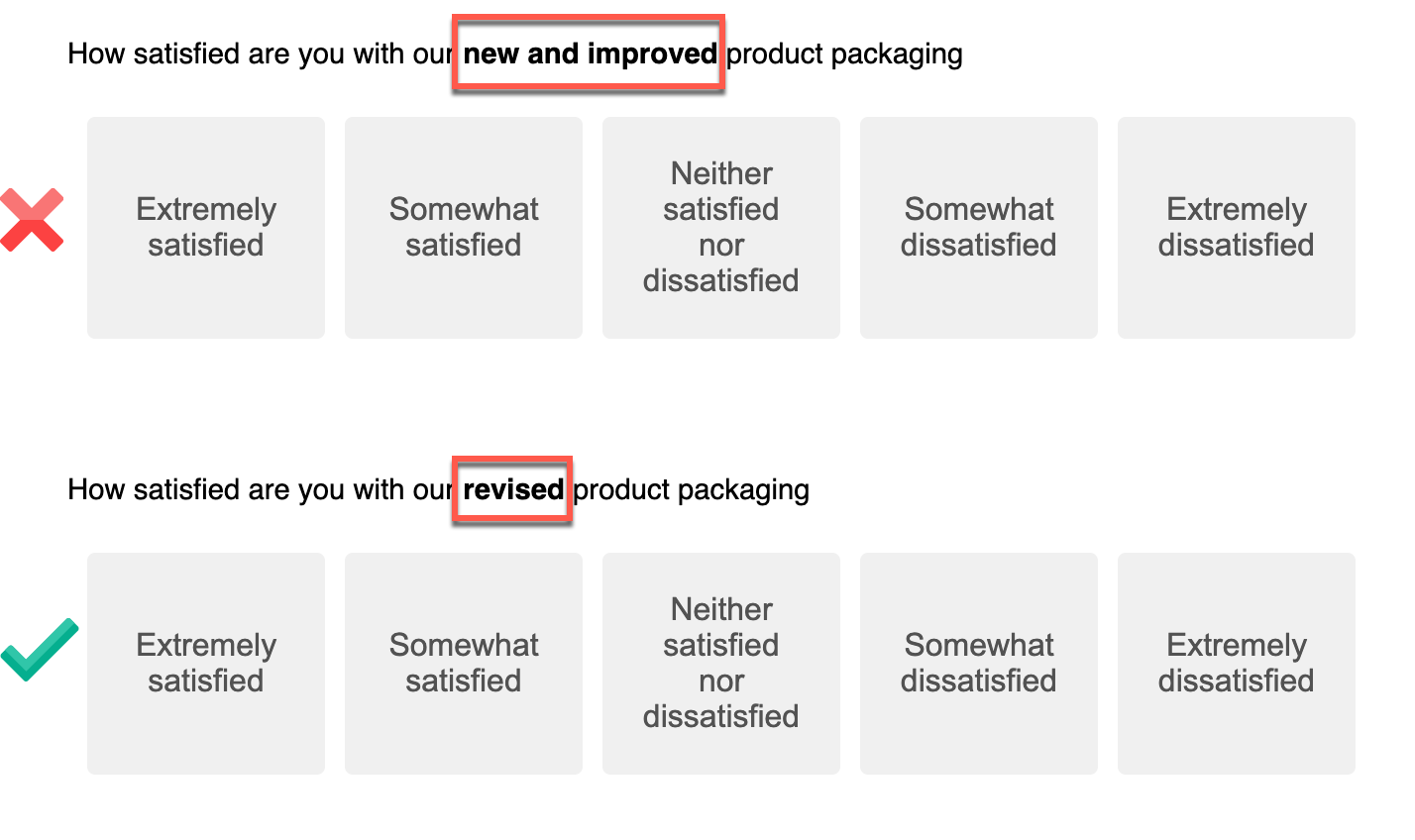There are some best practices to follow in wording your questions in order to collect the highest quality data.
Avoid Superlatives:
Superlatives can influence your survey responses. Words such as “Most”, “Best”, and “Always” are very subjective to the individual answering the question. For example:
-
Bad Practice: “Brand X is the most reliable brand”
-
Good Practice: “Brand X is a reliable brand”
Avoid Absolute Choice Scenarios:
Absolute choices force a respondent into unnatural answers. For example:
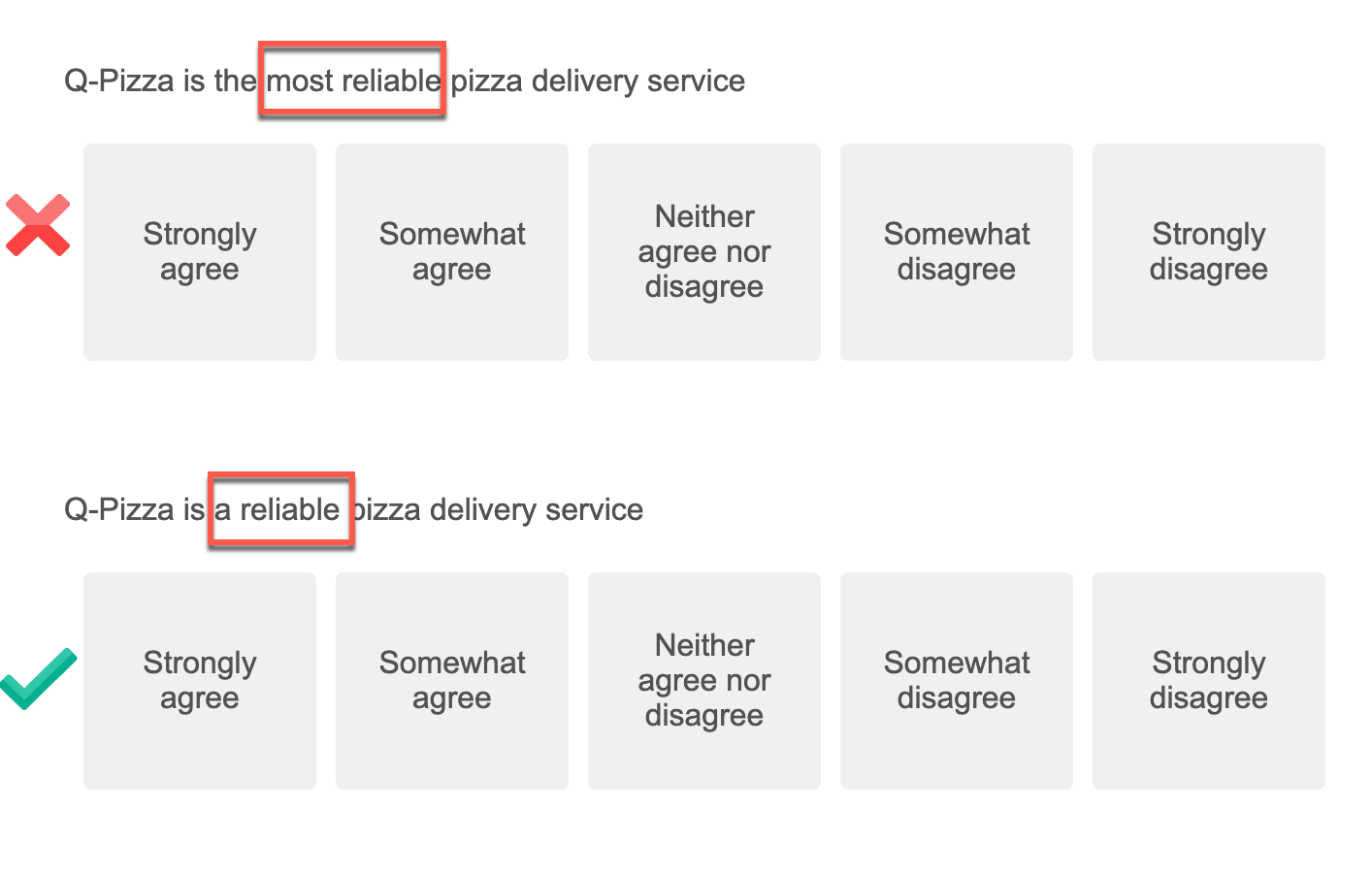
-
Bad Practice: “Do you always drink full cream milk in your coffee?”
-
Good Practice: “Do you drink full cream milk in your coffee?
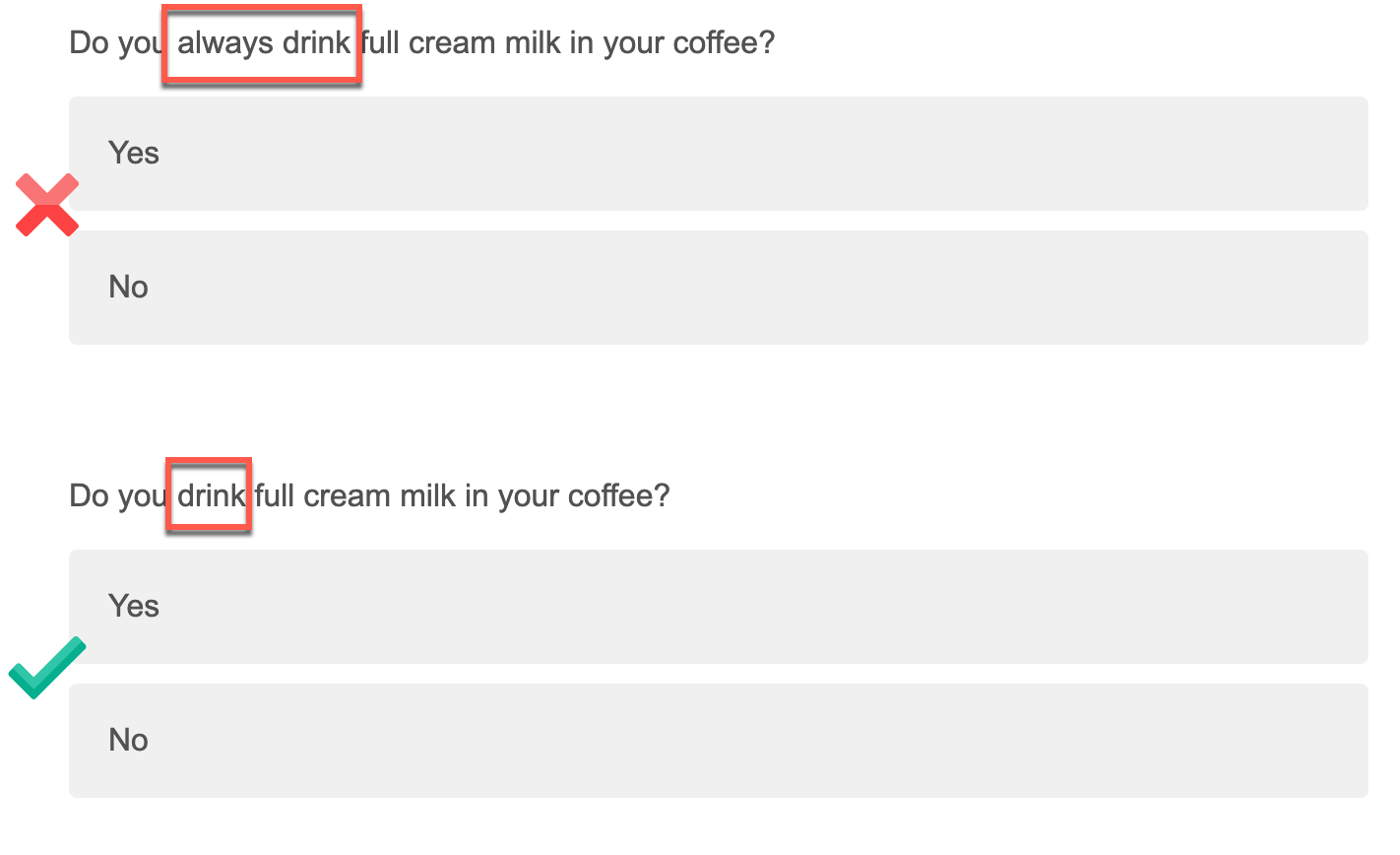
Carefully Design Answer Choices:
Using only Yes/No answer choices can provide less detailed data than a response scale or multiple-choice since they only yield one of two possible answer choices. Many Yes/No questions can be reworked to expand the choices. For example:
-
Bad Practice: Do you drink coffee? - Yes / No
-
Good Practice: Do you drink coffee? - Every day / a few times a week / a few times per month / every few months / never.
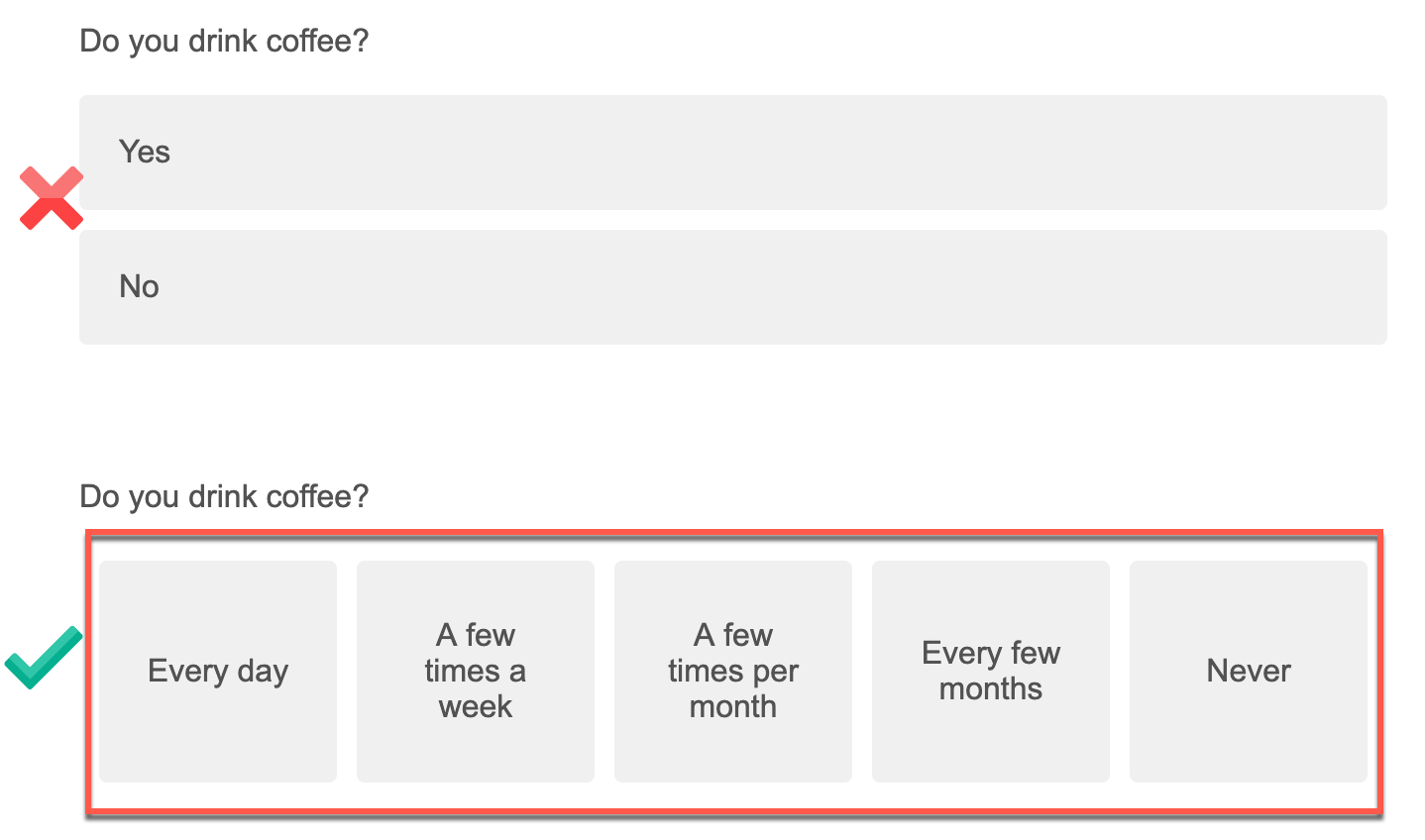
Avoid Double-Barreled Questions:
A double-barreled question is when two separate elements are asked about in a single question. For example:
-
“How satisfied are you with the quality of our product and support?”
A respondent cannot answer the question on both product and support satisfaction, and there is no way for you to separate the feedback in the analysis.
Instead, break the question into two separate questions, such as:
-
Good Practice: “How satisfied are you with the quality of our support?”
-
Good Practice: “How satisfied are you with the quality of our product?”
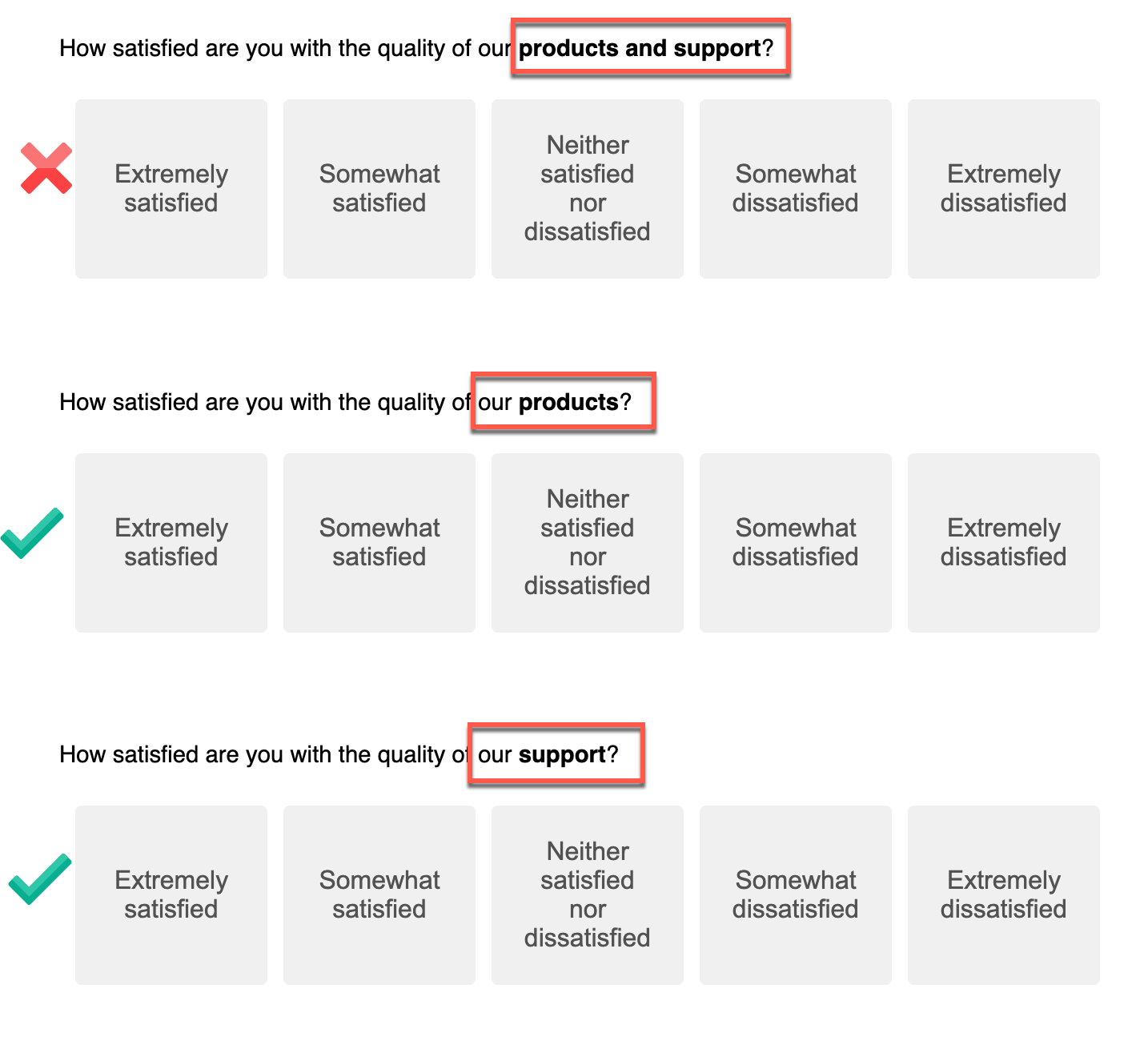
Avoid Leading Questions:
A leading question is where the question wording hints at a perspective and influences the response, which produces poor data. For example:
-
Bad Practice: “How satisfied are you with our new and improved product packaging?”
-
Good Practice: “How satisfied are you with our revised product packaging?”
